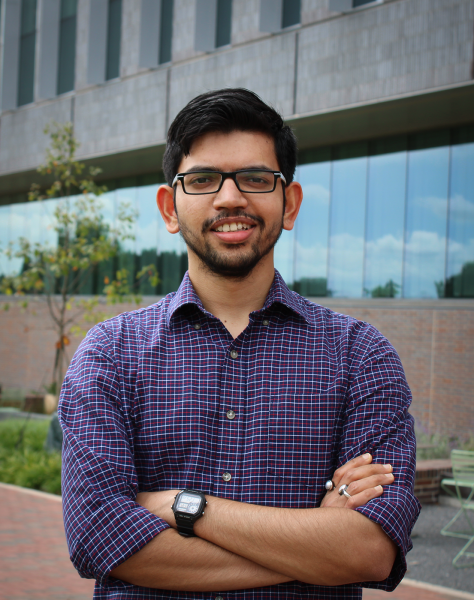 Tuhin Roy is a fifth year Ph.D. student with a concentration in Structural Engineering and Mechanics. Roy grew up in India and is advised by Dr. Murthy N. Guddati. His research on the application of computational mechanics in the biomedical field focuses on the estimation of arterial stiffness, which is a key biomarker for the early detection of multiple cardiovascular diseases. After defending his dissertation in July, he is transitioning to a postdoctoral fellow position in Dr. Guddati’s research group.
Tuhin Roy is a fifth year Ph.D. student with a concentration in Structural Engineering and Mechanics. Roy grew up in India and is advised by Dr. Murthy N. Guddati. His research on the application of computational mechanics in the biomedical field focuses on the estimation of arterial stiffness, which is a key biomarker for the early detection of multiple cardiovascular diseases. After defending his dissertation in July, he is transitioning to a postdoctoral fellow position in Dr. Guddati’s research group.
What influenced you to go into engineering?
Tuhin Roy: TV shows like “Megastructures,” “Extreme Engineering” and “Mega Builders” influenced me to go into engineering. My young mind was in awe of the problem-solving skills of the world-class engineers. Their strong determination to overcome challenges shaped my academic interest. The obstacles faced in making iconic engineering projects like the Hoover Dam, the Flatiron Building and the Tacoma Narrows Bridge and engineers’ ability to find lessons in former mistakes to come up with a suitable solution for a particular engineering problem have strongly intrigued me.
What problem(s) are you trying to solve? Why were NC State and CCEE a good fit for you?
TR: I chose CCEE at NC State because I wanted to do research in Computational Mechanics, and Dr. Guddati is one of the pioneers in the field. In Dr. Guddati’s group, I have worked with researchers from the Mayo Clinic and Duke University. I have enjoyed working in this collaborative environment. In addition to my studies, I was president and vice president of the Civil Engineering Graduate Student Association for about three years. In addition to my involvement with CE-GSA, I was one of the co-chairs of the Teaching Effectiveness Committee under the University GSA. These leadership roles gave me managerial skills that will help me in the future, irrespective of the career path I choose.
Where did your passion for this particular focus come from?
TR: I got quite interested when Dr. Guddati presented this research challenge. At that time, I was not completely sure if I was the right fit, given my background. As I started solving challenges, I was intrigued by the fact that my existing knowledge can solve a problem which is undoubtedly in another field. In the past, I heard about the benefits of interdisciplinary research, now I am actually experiencing it.
Where do you see yourself in five years?
TR: I want to be in academia. In the next couple of years, I will try to gain more experience in doing research through postdoctoral positions at several different universities. Currently, I am transitioning to a postdoctoral scholar position in Dr. Guddati’s research group. In addition, I have plans to visit the Mayo Clinic early next year to get more insights on the experimental side.
